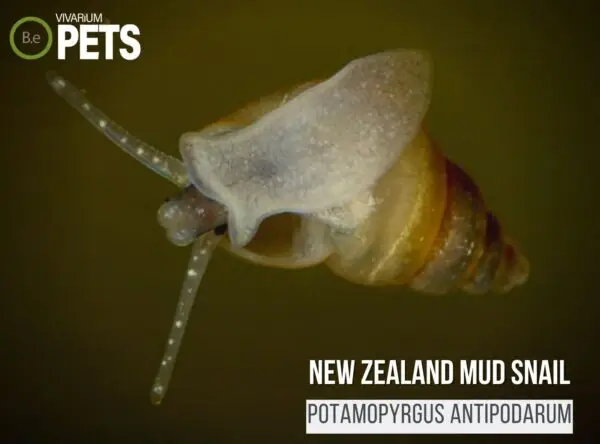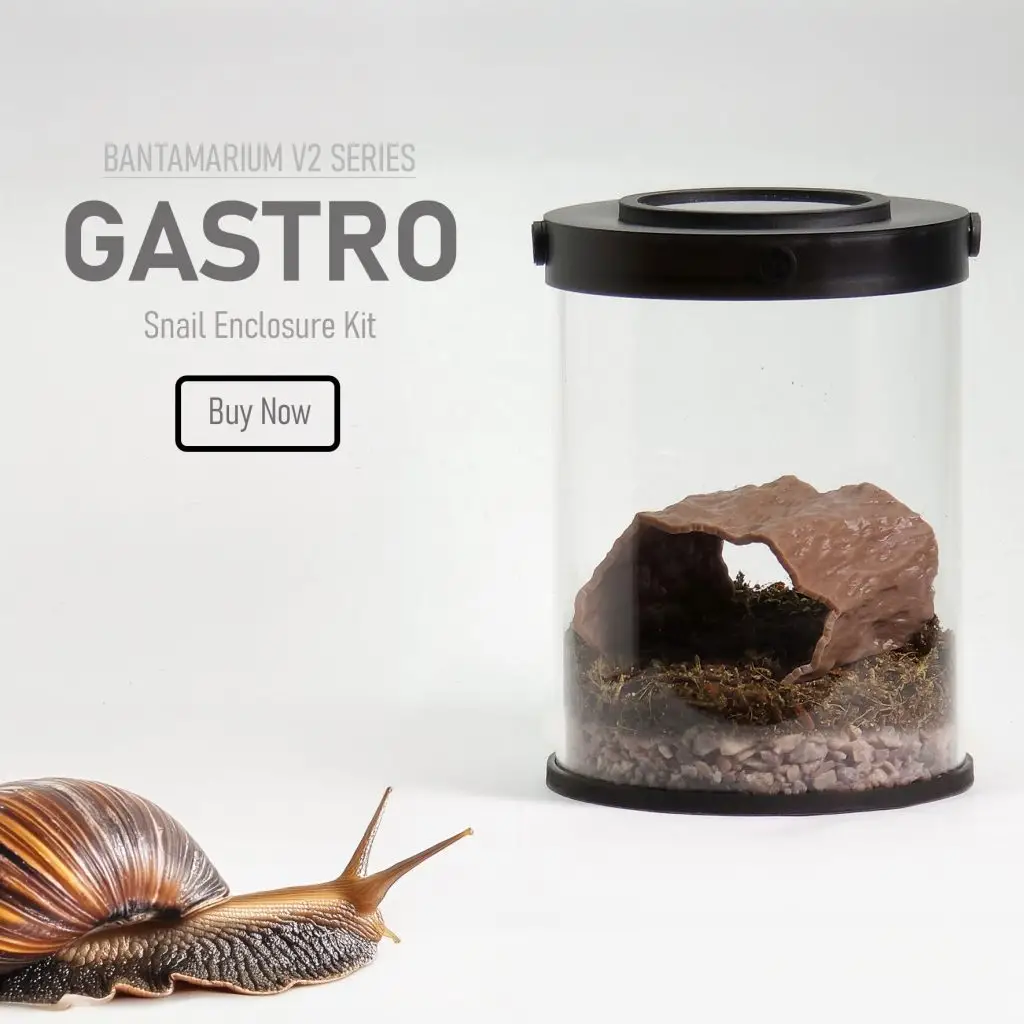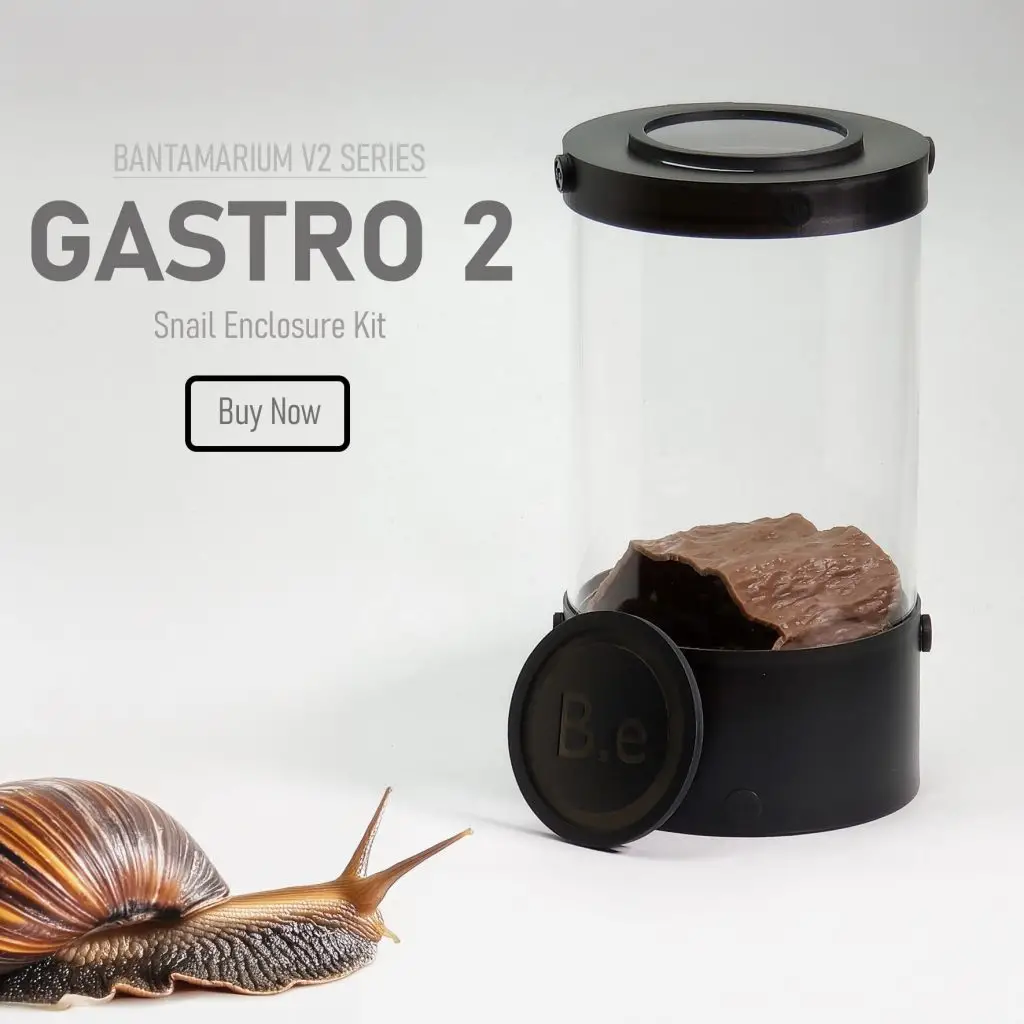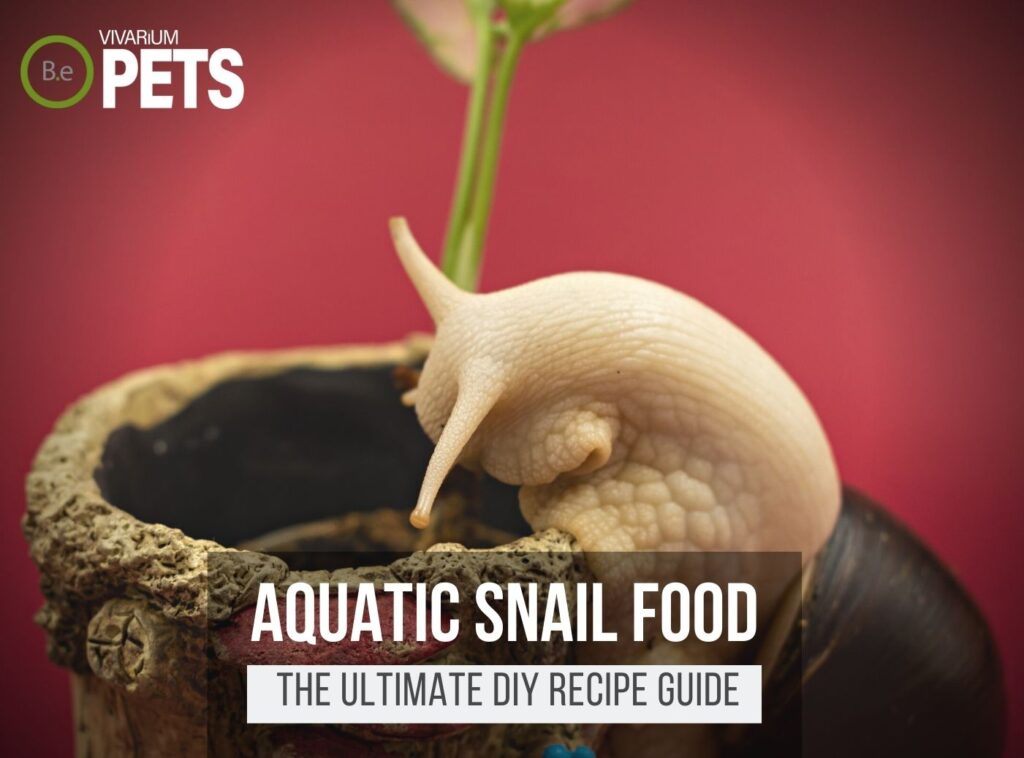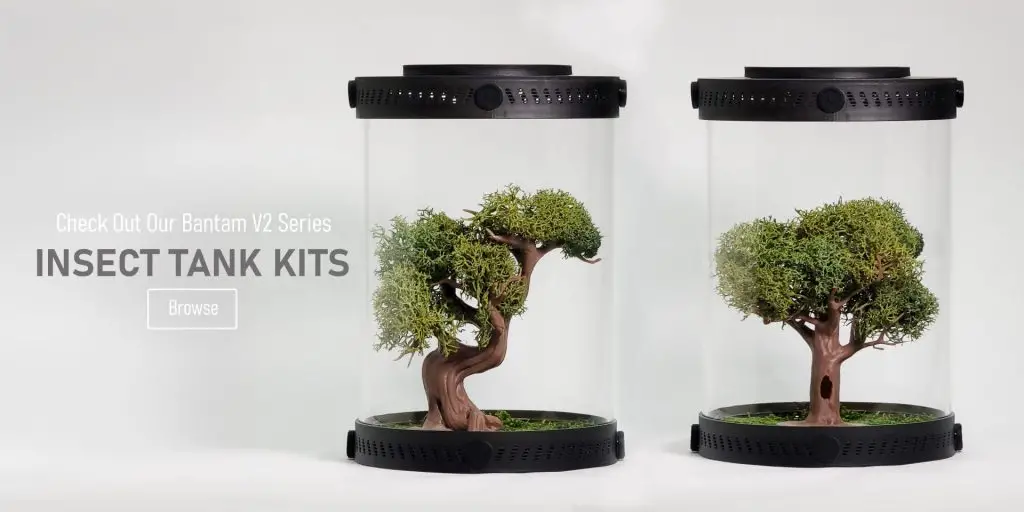Do you want to make the most of your pet New Zealand Mud Snail (Potamopyrgus antipodarum)?
If so, you have come to the right place! This comprehensive guide will provide you with the tools and techniques you need to effectively care for your new aquarium snail and ensure its continued health and longevity.
We will cover topics such as water quality, temperature, and filtration requirements, as well as feeding, supplementary care, and maintenance: all essential for your mud snail’s wellbeing.
So let’s get started!
Table Of Contents:
ToggleWhat Are New Zealand Mud Snails?
Potamopyrgus antipodarum is a common species of freshwater snail native to New Zealand.
They belong to the genus Potamopyrgus in the family Hydrobiidae and are also commonly known as New Zealand Mud Snails.
Their common name is derived from them being found in the muddy bottom of streams and lakes in New Zealand.
They live close to the bottom of the water though may come closer to the surface to replenish their oxygen supply.
Create an ideal habitat for your pet snails with our Customizable Snail Enclosure Kits, which include everything you need to get started.
What Do New Zealand Mud Snails Look Like?
Potamopyrgus antipodarum measure between 4 and 6 mm in length and are usually a yellowish or brownish hue, but they can be other colors in different environmental conditions.
New Zealand Mud Snails are slim and have tapered heads. They have a small shell made of three whorls with a broad umbo at the apex.
The snails have two pairs of tentacles, with the larger pair located at the front. They also have two pairs of muscular “feet” which they use to move around the water.
Benefits Of Using New Zealand Mud Snail
New Zealand Mud Snails are ideal inhabitants for beginner aquariums due to their small size and hardiness.
They require low maintenance, as they can thrive in many types of water, and they consume a wide variety of food, including algae, fungi, and organic detritus.
These creatures have a limited or nonexistent affinity for other livestock, making them ideal for peaceable tankmates.
They help keep the water clean and can survive in water with a wide range of pH values.


New Zealand Mud Snail Facts
New Zealand Mud Snails are filter feeders, with a natural diet consisting largely of algae and decaying organic matter.
They have a peaceful temperament and can live up to a year if cared for properly.
They are also hermaphrodites and can reproduce either through self-fertilization or through contact with a partner.
Habitat
Potamopyrgus antipodarum is native to New Zealand and is now found in lakes, streams, and rivers throughout the country.
They prefer slow-flowing bodies of water with muddy or sandy bottoms and plenty of vegetation.
These tiny gastropods can be found clustered together on submerged rocks, logs, and aquatic plants.
Diet
In the wild, Potamopyrgus antipodarum primarily feeds on a diet of algae and detritus.
They have a unique ability to filter small particles of food from the water column with their specialized filter systems.
In addition to algae and detritus, mud snails will also feed on food particles such as insect larvae and aquatic plant material.
They are highly opportunistic feeders, which means they will take advantage of any food sources that are available in their habitats.
Temperament
When it comes to temperament, New Zealand Mud Snails are generally peaceful and non-aggressive with both humans and other captive animals.
As long as they are provided with their essential needs, these aren’t a bother to the surrounding environment.
When encountered by other animals, Potamopyrgus antipodarum is usually content to slowly and cautiously move away from the disturbance.
As long as it is not disturbed, it will not actively seek out interaction.
When introduced to other aquatic creatures, they may be seen in the same tank, though they tend to gravitate towards the quieter, less aggressive areas of the tank.
In some circumstances, they can also be found around external sources of food, exploring and searching for something to eat.
Lifespan
The lifespan of Potamopyrgus antipodarum is estimated to be between six months to a year.
These mud snails go through a complex life cycle as they develop.
In the beginning, they are young snails, living as smaller larvae in shallow pools or “phreatic” habitats.
Eventually, they mature and reach adulthood, becoming small, freshwater snails. Once full-grown, they can reproduce and start the cycle anew.
Breeding
Potamopyrgus antipodarum are hermaphrodites, which means they possess both male and female reproductive organs.
During mating, they entwine their bodies and exchange sperm.
Following successful mating, they will lay individual eggs in the substrate of their tank, at a rate of roughly one to three a day.
After two weeks, the eggs will hatch into the juvenile state.
Young mud snails tend to grow exponentially during the first few weeks, reaching full size in about a month.
Juveniles can reach full reproductive maturity within six months, though this may take longer in some cases.
Older, less fit mud snails tend to lay fewer eggs than younger, healthier ones.
Where To Find New Zealand Mud Snail
Potamopyrgus antipodarum in the wild or for sale doesn’t have to be a daunting task.
Wild New Zealand Mud Snail populations can be found in streams, rivers, ponds, and lakes throughout New Zealand and parts of Australia, although you should be aware that collecting from these natural habitats can negatively affect the local population.
When purchasing New Zealand mud snails, you should look for those that are healthy and active, with no blemishes or discoloration on their shells.
Once you have acquired the snails, it is vital to establish proper care practices and provide your pet with a comfortable environment to thrive.
New Zealand Mud Snail Care
To care for your New Zealand mud snail (Potamopyrgus antipodarum), ensure the water quality, temperature, and filtration requirements of the tank are met.
Provide regular feeding, supplementary care, and regular maintenance.
If any health or behavioral issues arise, investigate thoroughly and attempt to troubleshoot the problem.
With patience and care, your New Zealand mud snail can be happy and healthy for years to come!
Tank Requirements
To keep New Zealand Mud snails (Potamopyrgus antipodarum) in an aquarium setting, the ideal tank size for one or two snails is 5 gallons or more.
The ideal temperature for your tank should fall between 60-75 degrees Fahrenheit, with a pH of around 7.0-7.5 and a hardness between 5-25 dGH.
An aquarium of this size should accommodate around 2-3 inches of substrate for them to forage for food.
The best substrate for New Zealand mud snails is sand or crushed coral mixed with gravel, but you can also use aquarium plants.
The ideal lighting for a New Zealand mud snail tank is plenty of natural indirect light and minimal direct light, which should last around 12-14 hours per day.
What Do New Zealand Mud Snails Eat?
Feeding your New Zealand Mud Snail can be rewarding and enjoyable.
This species is an omnivore and needs to receive a balanced diet that includes both animal and vegetable matter.
Additionally, these snails are very sensitive to water conditions and need a steady diet of high-quality food.
To feed your snail, you can use a variety of food sources such as algae wafers, blanched vegetable matter, small fish or shrimp, and frozen and freeze-dried foods.
For optimal nutrition, you should provide a variety of food sources that include at least one form of algae wafer, vegetable matter, and protein sources.
You should also periodically offer your snail a variety of vegetables like cucumber or zucchini.
Finally, you should also supplement their diet with small pieces of frozen and/or freeze-dried foods like bloodworms, Daphnia, brine shrimp, and krill.
A proper diet is essential for your snail’s wellbeing so make sure to provide them with a balanced diet of food sources.
It’s also important to remember that overfeeding can lead to water quality issues, so only feed your snail as much as it can consume in a few minutes.
If you’re more of an avid hobbyist like myself, be sure to check out my ultimate DIY aquatic snail food guide. I give a more in-depth explanation of the best foods and my favorite recipe.
Best Tankmates For New Zealand Mud Snail
New Zealand Mud Snails are peaceful and beneficial creatures, so several tankmates can form fruitful relationships with them.
The best tankmates for a New Zealand Mud snail generally consist of peaceful animals such as shrimp, other snails, and dwarf frogs.
These animals all have symbiotic relationships with the mud snail, either by cleaning them, preying upon parasites, or producing waste that the mud snail can feed on.
Shrimp are a great addition to any tank, particularly Dwarf Shrimp, as they help to keep the tank clean, but they also do not pose a threat to the mud snail.
They have no interest in feeding upon the mud snails, since they are omnivorous, and are instead content with any algae or food particles in the water.
Another ideal tankmate for the aquatic snail is the Otocinclus Catfish, which acts as a scavenger and cleaner.
They actively clean their tankmates and the tank substrate, helping to keep the water quality and parameters in check, and they provide an enormous benefit to the mud snail by cleaning them of parasites and debris.
Finally, Ramshorn and Malaysian Trumpet snails are excellent additions as they are content to eat dead plant matter, thereby helping to keep the tank area clean.
They also do not pose a threat to the mud snail and can benefit them, since they will often consume waste and decaying matter which would otherwise contaminate the water.
Conclusion
We hope that this guide has helped give you the necessary tools for caring for your Potamopyrgus antipodarum.
Taking the time to understand and provide the right conditions for your pet snail is essential for its health and well-being.
With the right care, your little friend can live a long and active life. Here’s to the happiest of homes for your New Zealand Mud Snail!
Create the ideal habitat for your snails with our species-specific soil mixes and Insect Enclosure Kits. These products provide everything you need for a successful and thriving snail habitat.
Frequently Asked Questions
The New Zealand mudsnail is considered invasive due to its ability to reproduce asexually, grow rapidly, adapt to various environments, and outcompete native species with few natural predators.
New Zealand mudsnails are found on every continent except Antarctica. They typically inhabit freshwater streams, rivers, lakes, and ponds.
They can also be found in brackish water and estuaries, and thrive in environments with low oxygen levels.
The New Zealand mudsnail was likely introduced to the US through bait buckets, boating, and fishing equipment, and on the feet of waterfowl and other aquatic birds.
The snail has also been spread through the release of aquarium pets, fishing bait, and the dumping of live and preserved specimens.
The New Zealand mudsnail is an omnivore that primarily feeds on algae and other microorganisms. It is also known to consume small crustaceans and other invertebrates.
Its constant grazing can have negative consequences for native species that rely on food sources that the mudsnail out competes for.
While there are some fish species that may eat New Zealand mudsnails, such as trout and sculpin, they are not a preferred food source for most fish.
Additionally, research suggests that snails can survive passage through the digestive system of some fish and remain viable.
As a result, predation by fish is not generally considered an effective control method for managing New Zealand mudsnail populations.
New Zealand mudsnails are adapted to live in aquatic environments and require water to survive.
They can survive short periods of time out of water, such as during periods of low flow in streams, but they are not able to live for extended periods of time outside of water.
Research has suggested that the snails can survive for up to several weeks in damp environments, but this can vary depending on factors such as temperature, humidity, and the presence of suitable food sources.
No, New Zealand mudsnails are not poisonous.
